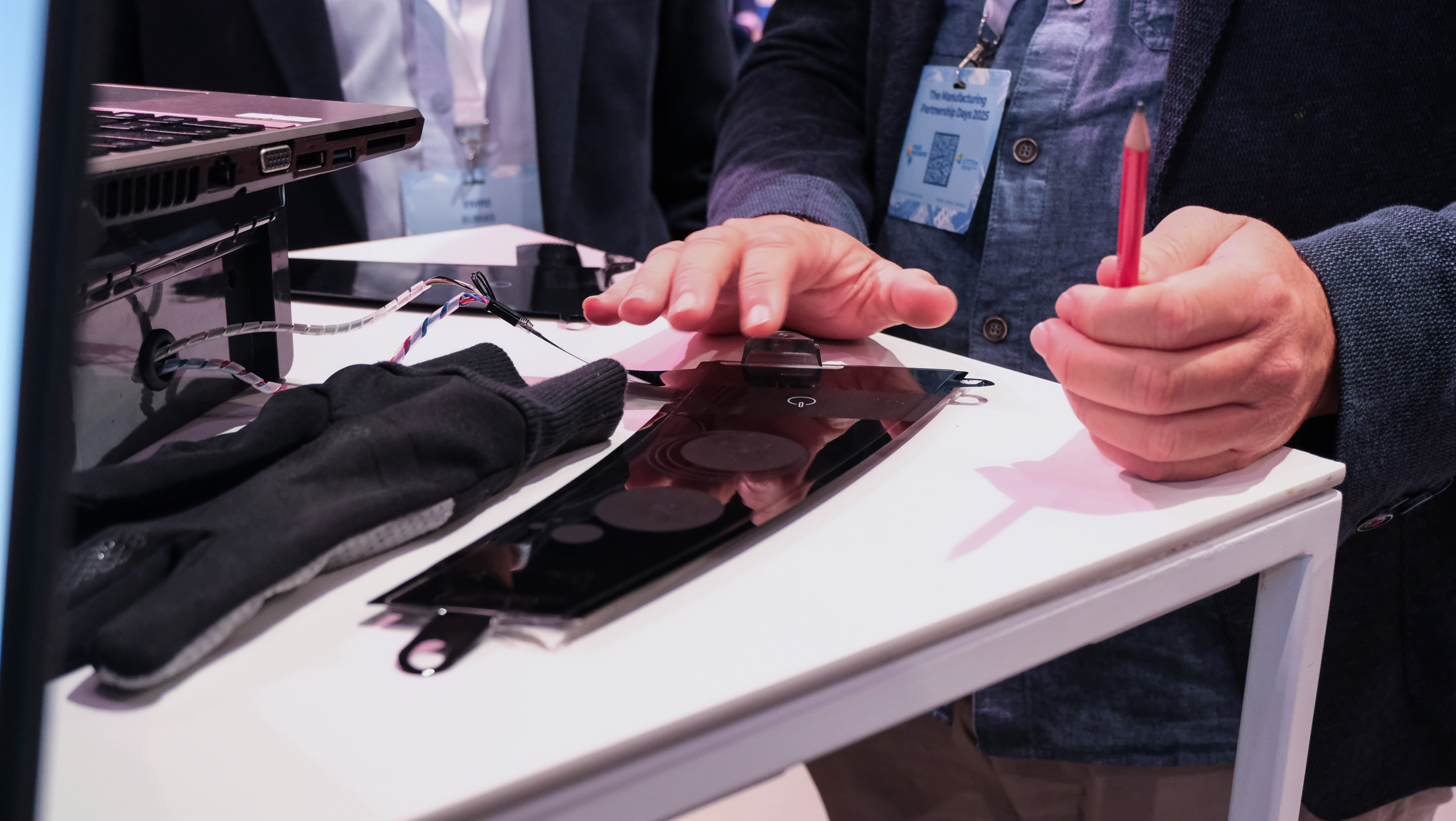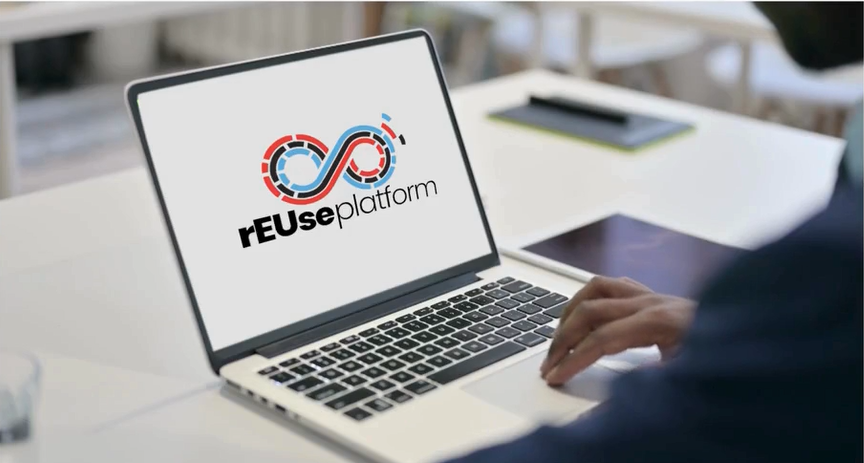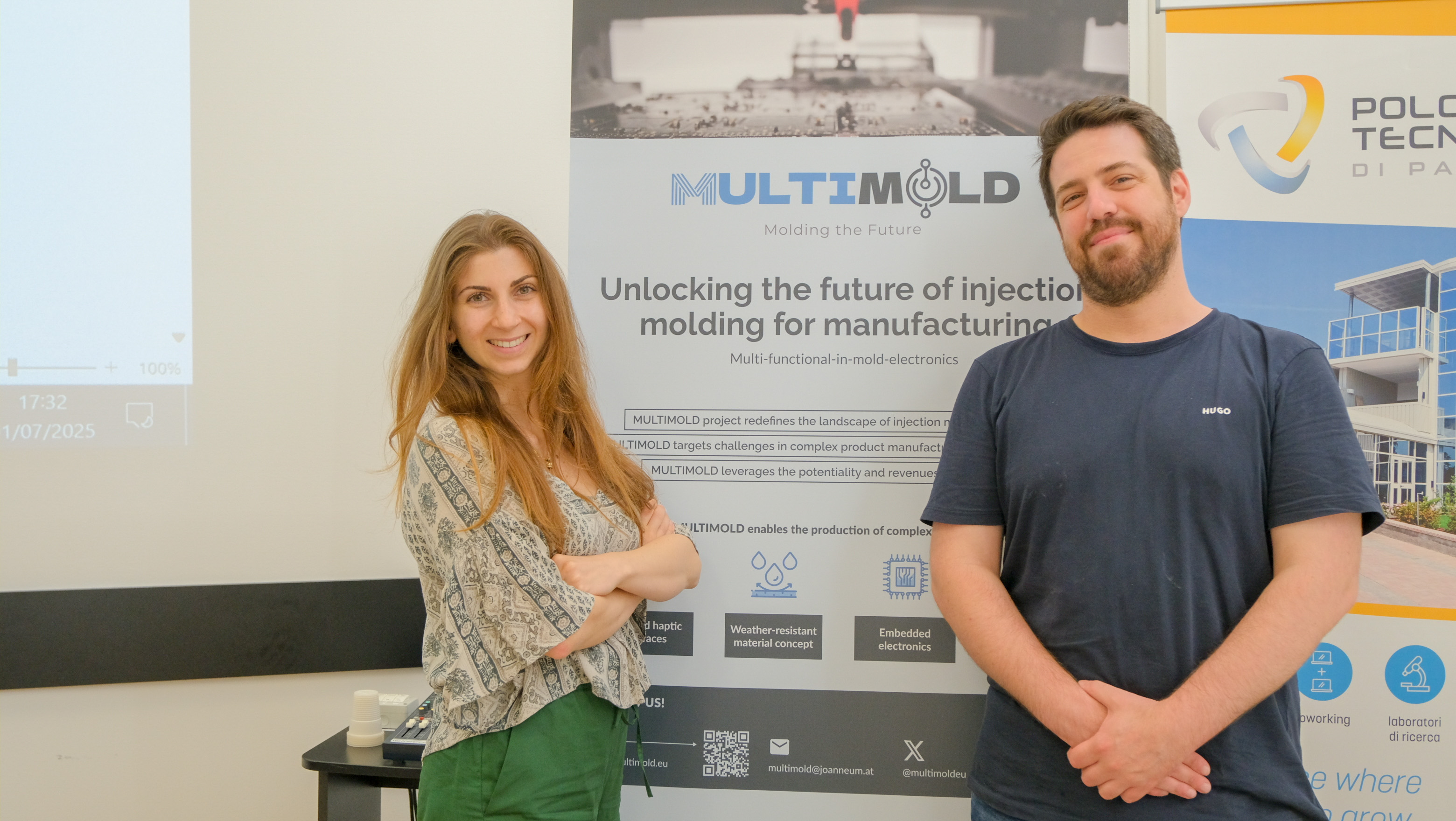MULTIMOLD 1s Gen Demonstrator Marks Turning Point for Injection Molding Technology
At the EFFRA Manufacturing Partnership Days in October, MULTIMOLD had the opportunity to showcase for the first time the 1st GEN demonstrator. After 18 months of testing and samples, the MULTIMOLD project achieved some relevant outcomes for the beginning of a new era for the film insert molding industry.

Film insert molding and in-mold decoration (IMD) enable 3D human-machine interfaces with integrated graphics in injection molding electronics (IME). While offering compact designs, durability, and cost-effective production, current IME solutions face critical limitations: capacitive sensors fail with gloves, multi-step processes reduce manufacturing yield, multi-material products resist recycling and violate EU sustainability requirements, and LED heat degrades sensor performance.
MULTIMOLD: Sustainable IME Innovation for Industrial and Automotive Applications
MULTIMOLD addresses these challenges through printed piezoelectric sensors, 3D flexible PCBs, and recyclable materials. Targeting industrial control panels, automotive interfaces, and wind turbine monitoring, the project delivers demonstrators with multimodal sensors, haptic feedback, and functional surfaces offering antibacterial, anti-icing, and easy-to-clean properties—advancing production efficiency, durability, and sustainability in next-generation injection molding electronics.
Breakthrough Results from 1st Generation Demonstrators
Technological Achievements
The first 18 months of MULTIMOLD have yielded impressive technological breakthroughs. Piezoelectric touch buttons now respond reliably to pressure input while wearing gloves, in humid environments, and even underwater, dramatically expanding IME usability in human-machine interfaces.
The project successfully demonstrated 3D-formed flexible PCBs within the injection molding process. An automotive HMI prototype incorporates piezoelectric sensors and illuminated touch buttons that function flawlessly on vehicle exteriors in highly humid conditions. An industrial HMI integrates haptic actuation with 3D-formed flex PCBs, achieving high integration density for LEDs and piezoelectric sensors in confined spaces. FlexPCBs in 3D shaped environments make In-mold electronics compatible with conventional soldering techniques and thus enable higher integration and power density than printed electronics alone, opening possibilities from LED and sensor integration in tight spaces to complete electronic circuits in demanding environments.

Perhaps most significantly, MULTIMOLD achieved the first successful overmolding of sensitive electronics including batteries, creating fully self-powered sensor technology encapsulated through injection molding. This breakthrough enables reliable sensor systems for harsh conditions, as demonstrated on wind turbine rotor blades.
.jpg)
Sustainability and Circularity Progress

The project has made substantial progress on sustainability goals. A dedicated testbed allows the evaluation of different material combinations in IME recycling trials, effectively separating plastics from electronics. This work generated comprehensive life cycle assessment (LCA) data for the production phase across different IME approaches.
FEM and Optical simulation
To enhance process reliability and reproducibility, the team implemented FEM and optical simulation to support injection molding and mold fabrication. A custom data storage system provides cloud access to production data for analysis, while a digital product passport framework improves process yield and identifies critical failure mechanisms throughout the production chain. Advanced light management using microstructural elements has been evaluated alongside fabrication approaches for microstructured molds using direct laser writing and grayscale laser lithography.

Scientific Contributions
The 1st GEN demonstrators delivered significant scientific advances in in-mold electronics and smart manufacturing. The successful integration of piezoelectric sensing in injection-molded components proved reliable touch functionality in challenging conditions—underwater, with gloves, and with various objects. The first-ever demonstration of embedding batteries and solar cells via overmolding validated encapsulation strategies for autonomous sensor systems in harsh environments.
Confirmation of 3D-formed flexible PCB feasibility enables high-density electronics integration in confined geometries. Material combinations were systematically evaluated for recyclability and circular economy potential. Laser-based micro structuring techniques for mold fabrication demonstrated improvements in light management, adhesion, and haptic user interaction within injection-molded components.
Strategic Impact on European Manufacturing
MULTIMOLD strengthens European manufacturing capabilities by consolidating PCB production and plastic part assembly into a single injection molding process, reducing dependence on low-wage Asian manufacturing. This advanced technology creates opportunities for highly qualified employment across Europe, demanding sophisticated mechanical engineering and simulation expertise.
By establishing a clear pathway for next-generation electronics fabrication and addressing key technological barriers to in-mold electronics adoption, the project enhances European competitiveness and technological sovereignty. MULTIMOLD positions the EU at the forefront of innovative manufacturing technologies with strategic implications for industrial policy and economic development.
Looking Ahead
The innovations developed through MULTIMOLD are overcoming in-mold electronics' current limitations by demonstrating reliability, sustainability, and multifunctionality across applications from human-machine interfaces to sensor systems in extreme environments. The project continues advancing toward 2nd generation demonstrators that will further validate and refine these breakthrough technologies.
Stay updated on MULTIMOLD developments through the project's LinkedIn and X channels as the team works toward realizing the full potential of next-generation injection molding electronics.









.jpg)







